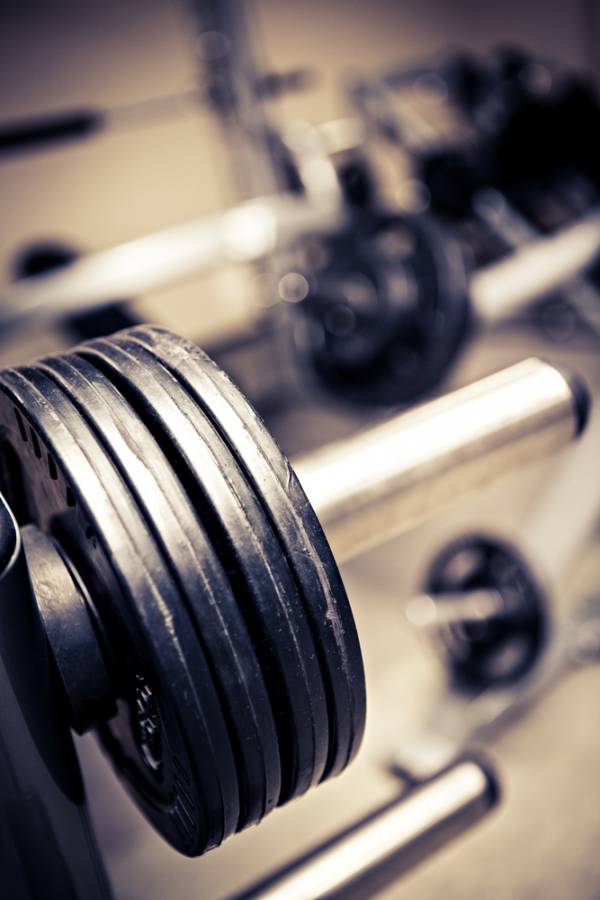You’re starting a training program to achieve a particular goal. It might be to lift competitively. Maybe it’s to better your sport performance. Or it could be to just get fit, lose some fat, and garner some muscle mass. If you’re inexperienced, starting a new program can be scary. Where should you start? What should you do? Who should you believe?
There is a lot out there. You can be bombarded by all the late-night nauseating infomercials, books, websites, fitness phone applications, the plethora of fitness magazine workouts, and other get fit-quick programs. It can all create unnecessary hair-pulling. I’ll try to get you started down the correct path to achieve your goals.
For that, I’ll begin by addressing three realities that should keep your efforts sensible and productive. This includes:
- Your goal
- Your time commitment
- Your ability to make physical changes
1. Your Goal
Regarding your goal, it will most likely fall within one or a combination of the these categories:
- Improved sport and skill performance
- Improved skeletal-muscle and cardiovascular function (strength, power, and endurance)
- Improved physique (fat loss and muscle definition)
If your goal is improved sport and skill performance, then get out there and practice your event. Make time for even more practice of your event. Do you have extra time? Great. Practice even more. Nothing trumps the sport-specific repetition of skills you will need to excel. The more time spent working on these skills, the better you will become.
If your goal is improved strength and power, then visit the weight room and be ready to work. Work to improve your strength. Use progressive overloads, work hard, recover from the previous workout, and attempt to do more over time. This is one of the simplest, yet most ignored factors of progressive training. Record what you do and attempt to do more over time. Use workable and efficient overload and progression protocols. Be safe and always have a competent training partner.
This type of training will also improve your ability to improve power output potential. Possessing greater strength will not only improve your force output, but at the same time will improve your ability to express greater explosive strength (power) due to a greater number of stronger motor units. Make sure you address the strength of all the muscle structures involved with producing the greatest power output.
If your goal is to enhance cardiovascular endurance, perform reasonable endurance-enhancing workouts. Examples are short-term (less than :30) and longer-term (:30 to 1:30) interval runs, 20 to 40 minute circuit training, and high-intensity, steady-state training up to 40 minutes.
 If your goal is an improved physique via fat loss and muscle growth, then clean up your diet, engage in high-demanding exercises to use the most calories, and build or maintain muscle tissue via sensible strength training exercises. Please eschew the “plod away on a treadmill for an hour at a half-assed pace” approach. That burns minimal calories and stimulates zero muscle tissue to give you shape. Understand 80% of fat loss is a result of your food intake habits.
If your goal is an improved physique via fat loss and muscle growth, then clean up your diet, engage in high-demanding exercises to use the most calories, and build or maintain muscle tissue via sensible strength training exercises. Please eschew the “plod away on a treadmill for an hour at a half-assed pace” approach. That burns minimal calories and stimulates zero muscle tissue to give you shape. Understand 80% of fat loss is a result of your food intake habits.
Do you want to look toned? If so, strength train! And for all you gals, it’s okay to bust your ass in the weight room because you will not grow grotesque muscles unless you want to be an over-obsessed bodybuilder Hell-bent on steroid use. Building muscle naturally gives you muscle shape. Accumulating fat makes you soft. Building muscle and losing fast gives you that toned look. Do the math.
2. Your Time Commitment
I believe many people are discouraged from initiating a training program because they assume it requires hours and hours and days and days of commitment. Well, it does take valuable time and commitment to accrue results, but here is the good news: if you bust your butt when training, you don’t need mega-hours and mega-days of training to reach your goals.
I know that defies logic and the generally accepted work ethic mantra, but when it comes to human physiology, high effort and lengthy sessions are mutually exclusive. It is impossible to train hard and long. If you train really hard, this will be required:
- Less training time (you cannot sprint for a mile)
- More recovery time will be required between training sessions (dig a deeper hole and it will take longer to fill it in)
Demanding and physically taxing work requires a biologically mandated timeline to fully recover from. A great example is a flesh wound. Cut yourself and it will take a few days to completely heal. It will not happen overnight. A scab appears over time, but don’t pick at it before it naturally falls off. Let biology run its timeline and eschew the “I need to work hard every day” mentality.
Bottom line: work hard (effort), and then recover sensibly (time).
3. Your Ability to Make Physical Changes
Genetics. Yep, it can be depressing – or encouraging. If you have a preponderance of slow twitch muscle fibers, you will have an advantage in endurance events. You will be able to outlast others in such things as Ironman events, marathons, and any extended endurance contest (provided your training replicates that).
If you have an average mixture of fast and slow muscle fibers, you can go either way depending upon your training modes. Train solely for endurance and you will better yourself in that mode. Maybe not great, but better than average. Train for shorter, higher intensity events and you will become better in that. Again, maybe not exceptional, but better than the average Joe or Jane Doe.
If you have a majority of type II fast twitch fibers – especially if you possess optimal muscle structure origins and insertions – you may probably claim bad-ass status as far as your potential for demonstrating above-average strength displays.
More realities:
- If you’re tall, thin, and possess long and small muscle bellies, you’ll most likely not be able to demonstrate exceptional strength.
- If you’re short in stature, possess short limbs, and bulkier muscle bellies, most likely you can exhibit better strength as compared to the opposite physical qualities.
- If you possess average stature and an average muscle fiber make-up, congratulations, you’re normal. You may not be the next LeBron James or David Beckham, but provided you train hard and maximize your muscular strength and endurance, you can express above average skills and be competitive in your efforts.
When beginning a train program, be realistic. Understand your goal. Make sure you are performing the activities that address your goal. Secondly, assure you spend quality time on the practice and training for that goal. Quality over quantity. Nothing beats that.
Be realistic as far as your expectations. If you’re genetically challenged, do the best you can. Maximize the abilities you have. If you are genetically gifted, take advantage of that and go all out to be the best you can be.
Photos courtesy of Shutterstock.






